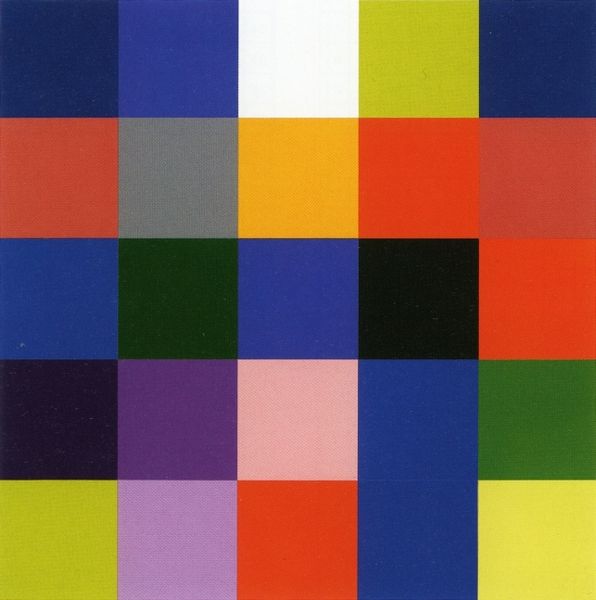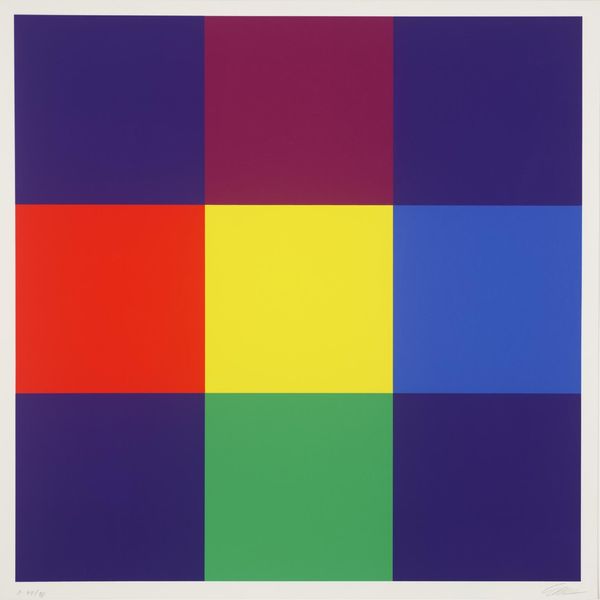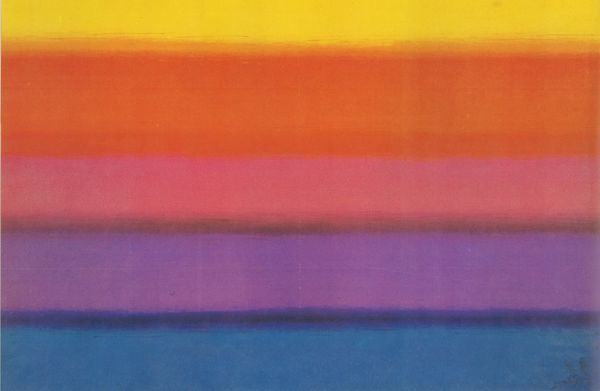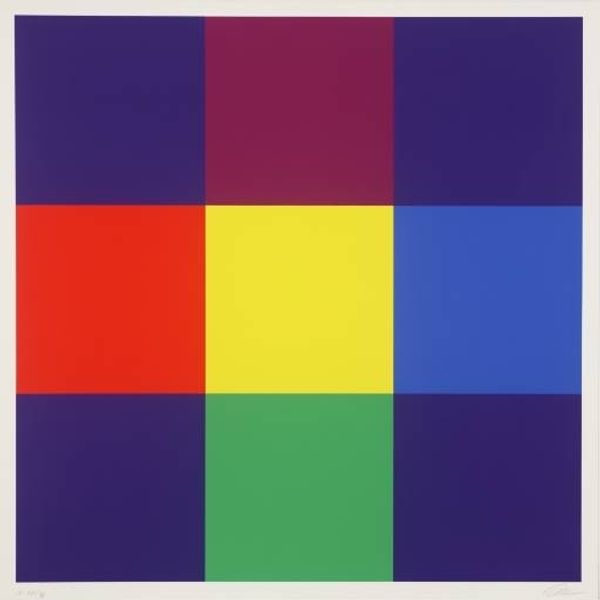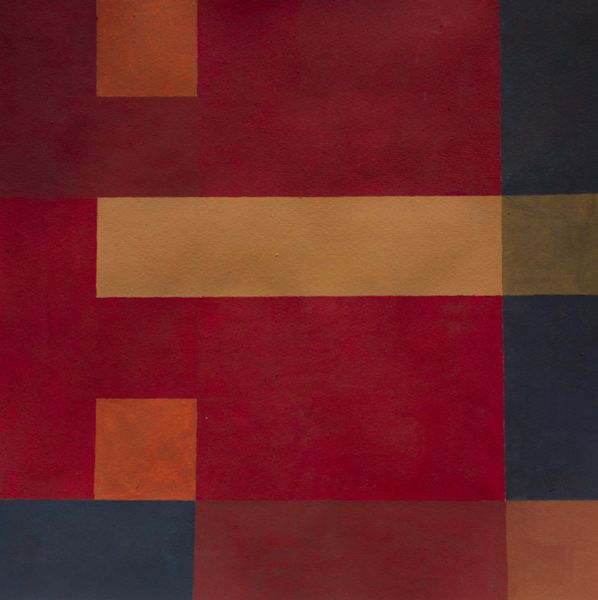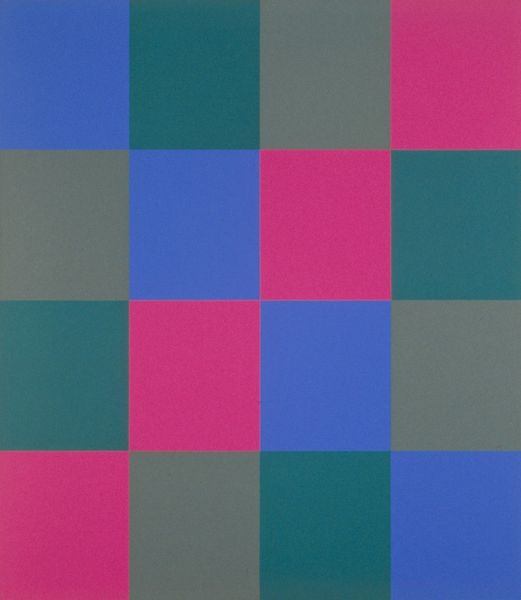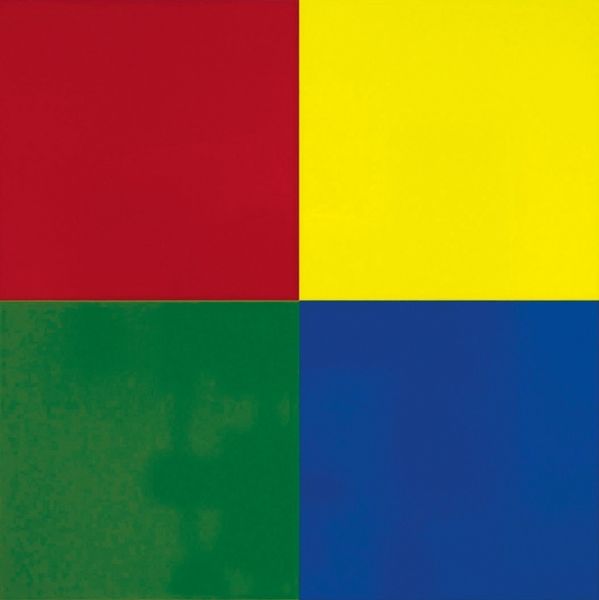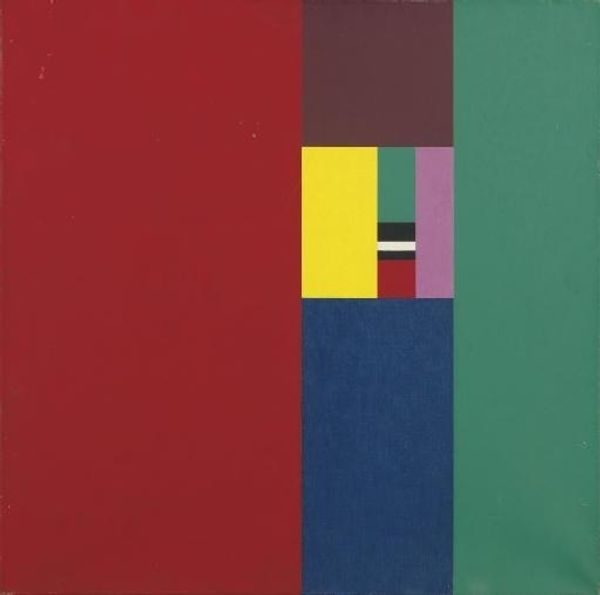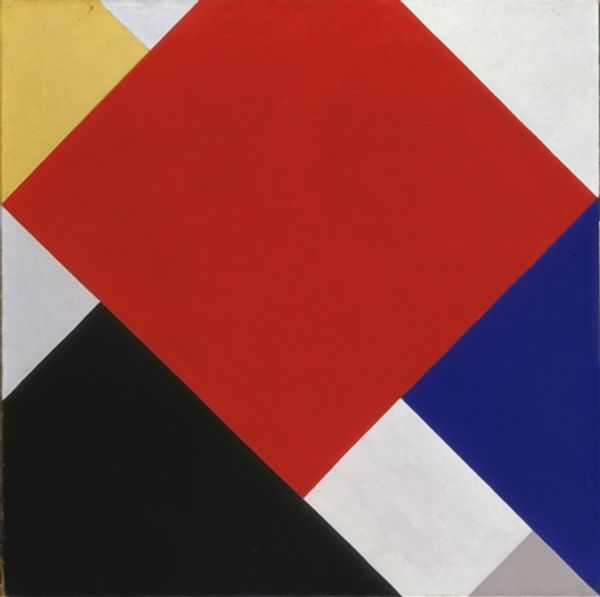
panel, tempera, oil-paint
#
concrete-art
#
panel
#
non-objective-art
#
tempera
#
oil-paint
#
pattern
#
colour-field-painting
#
geometric pattern
#
rectangle
#
minimal pattern
#
geometric
#
abstraction
#
modernism
#
hard-edge-painting
Copyright: Max Bill,Fair Use
Editor: We’re looking at Max Bill’s “Stabilisierter kern” from 1962. It’s oil and tempera on a panel, showing a grid of sixteen squares, mostly purples and blues, with warmer colors—red, orange, yellow— in the center. There's a strange warmth radiating from the center squares that I wasn't expecting! What do you see in this piece? Curator: It's interesting that you notice that radiating warmth, given the sociopolitical climate from which it emerged! Bill's commitment to concrete art, prioritizing geometric form and color theory above all else, was revolutionary for the time. While apolitical on the surface, it challenges us to reconsider notions of progress during the Cold War, and against what standards such a judgement is made. Do you see any echoes of that struggle reflected in the visual language, perhaps in how the “stabilized core” seems both contained and bursting with energy? Editor: I see what you mean! So, beyond just the aesthetic pleasure, are you saying the restrictive grid hints at this controlled society? And the inner, vibrant colors, which threaten to breach those restrictions, speak of liberation or progress? Curator: Precisely! Furthermore, the title itself, "Stabilized Core," evokes not just the aesthetic but also the political realities of the time, pushing us to consider who benefits from the stability and whose voices or desires are stifled. It is critical to reflect on what Max Bill's role as a White man in the art world entails. The composition also demands the question: is the core truly stabilized, or is it a moment of vibrant tension held in check? What happens when these voices demand equity? Editor: I hadn’t considered that! Looking at the work again, it’s no longer just a pretty grid of colours but also a reflection of complex social forces at play. The title, the structure— it's all charged with historical weight. Thanks for shifting my perspective. Curator: Absolutely! Considering an artwork's historical context empowers us to read beyond the surface and find meaning that resonates with our own lived experiences, even across generations. I now understand Max Bill much better.
Comments
No comments
Be the first to comment and join the conversation on the ultimate creative platform.

